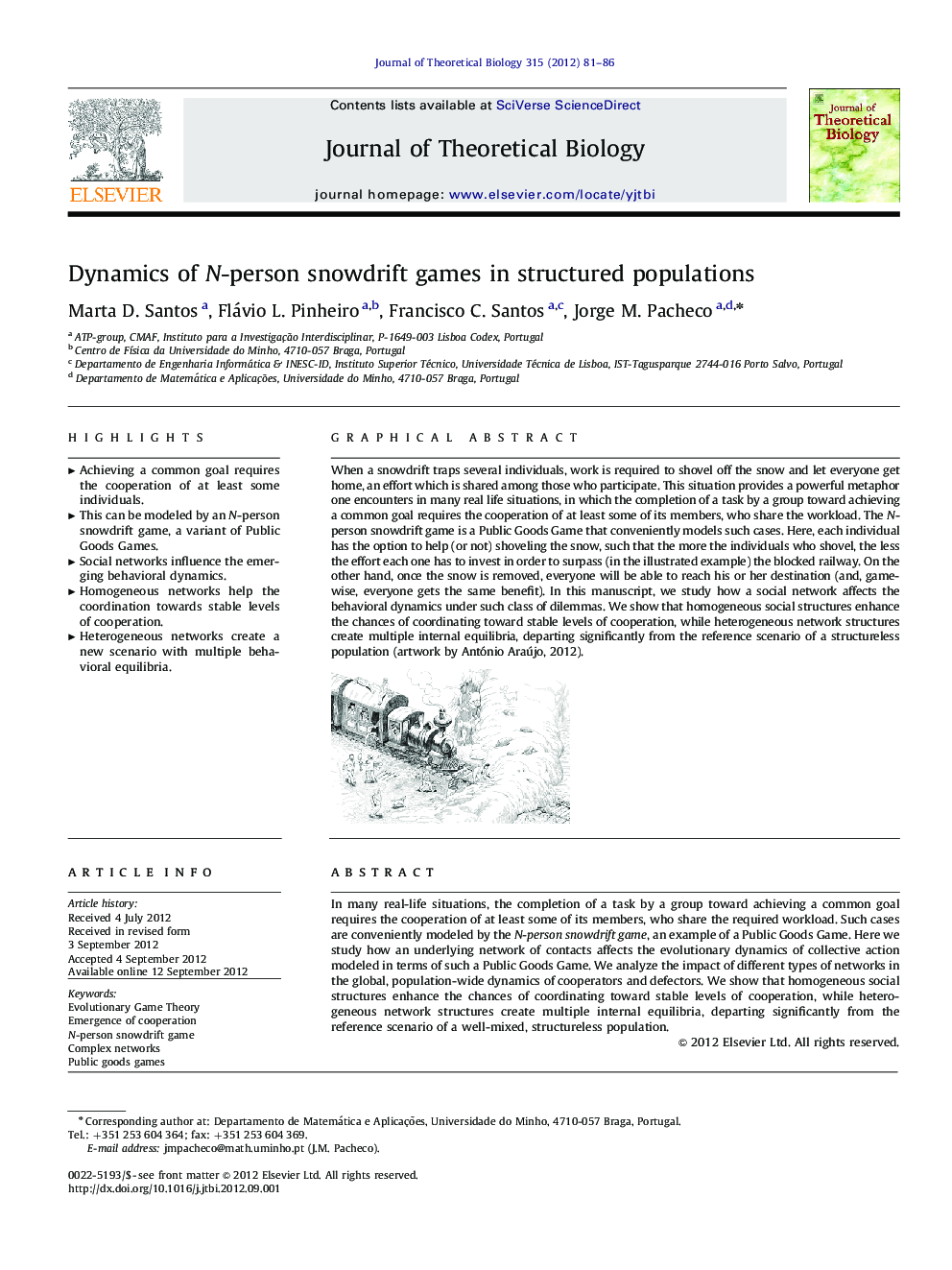| Article ID | Journal | Published Year | Pages | File Type |
|---|---|---|---|---|
| 4496587 | Journal of Theoretical Biology | 2012 | 6 Pages |
In many real-life situations, the completion of a task by a group toward achieving a common goal requires the cooperation of at least some of its members, who share the required workload. Such cases are conveniently modeled by the N-person snowdrift game, an example of a Public Goods Game. Here we study how an underlying network of contacts affects the evolutionary dynamics of collective action modeled in terms of such a Public Goods Game. We analyze the impact of different types of networks in the global, population-wide dynamics of cooperators and defectors. We show that homogeneous social structures enhance the chances of coordinating toward stable levels of cooperation, while heterogeneous network structures create multiple internal equilibria, departing significantly from the reference scenario of a well-mixed, structureless population.
Graphical AbstractWhen a snowdrift traps several individuals, work is required to shovel off the snow and let everyone get home, an effort which is shared among those who participate. This situation provides a powerful metaphor one encounters in many real life situations, in which the completion of a task by a group toward achieving a common goal requires the cooperation of at least some of its members, who share the workload. The N-person snowdrift game is a Public Goods Game that conveniently models such cases. Here, each individual has the option to help (or not) shoveling the snow, such that the more the individuals who shovel, the less the effort each one has to invest in order to surpass (in the illustrated example) the blocked railway. On the other hand, once the snow is removed, everyone will be able to reach his or her destination (and, game-wise, everyone gets the same benefit). In this manuscript, we study how a social network affects the behavioral dynamics under such class of dilemmas. We show that homogeneous social structures enhance the chances of coordinating toward stable levels of cooperation, while heterogeneous network structures create multiple internal equilibria, departing significantly from the reference scenario of a structureless population (artwork by António Araújo, 2012).Figure optionsDownload full-size imageDownload as PowerPoint slideHighlights► Achieving a common goal requires the cooperation of at least some individuals. ► This can be modeled by an N-person snowdrift game, a variant of Public Goods Games. ► Social networks influence the emerging behavioral dynamics. ► Homogeneous networks help the coordination towards stable levels of cooperation. ► Heterogeneous networks create a new scenario with multiple behavioral equilibria.
